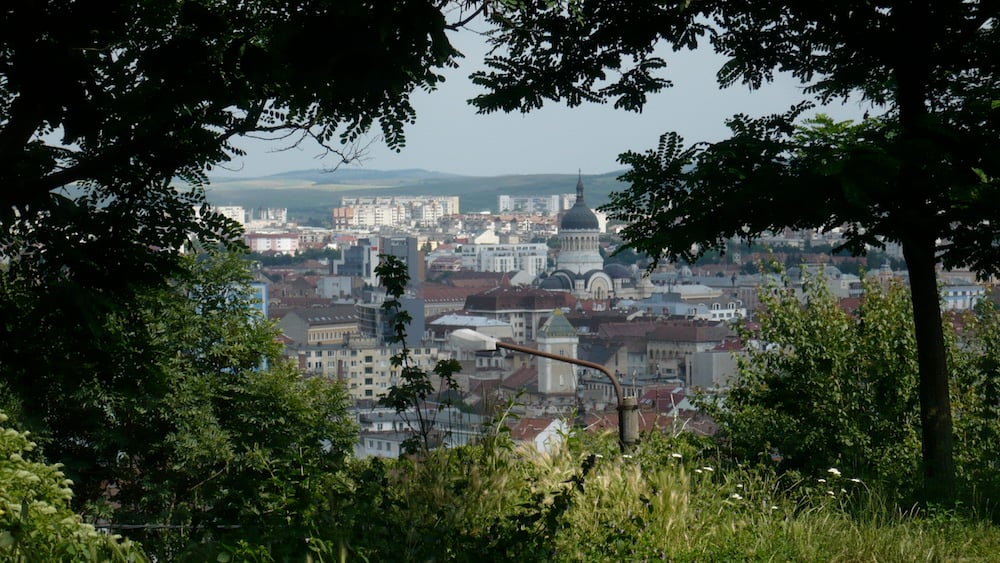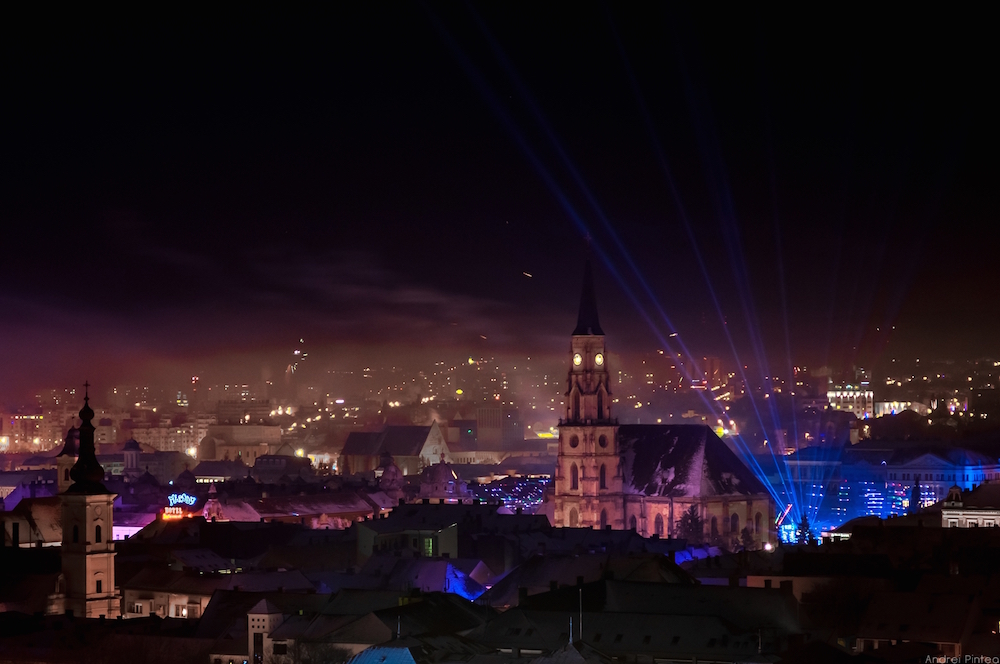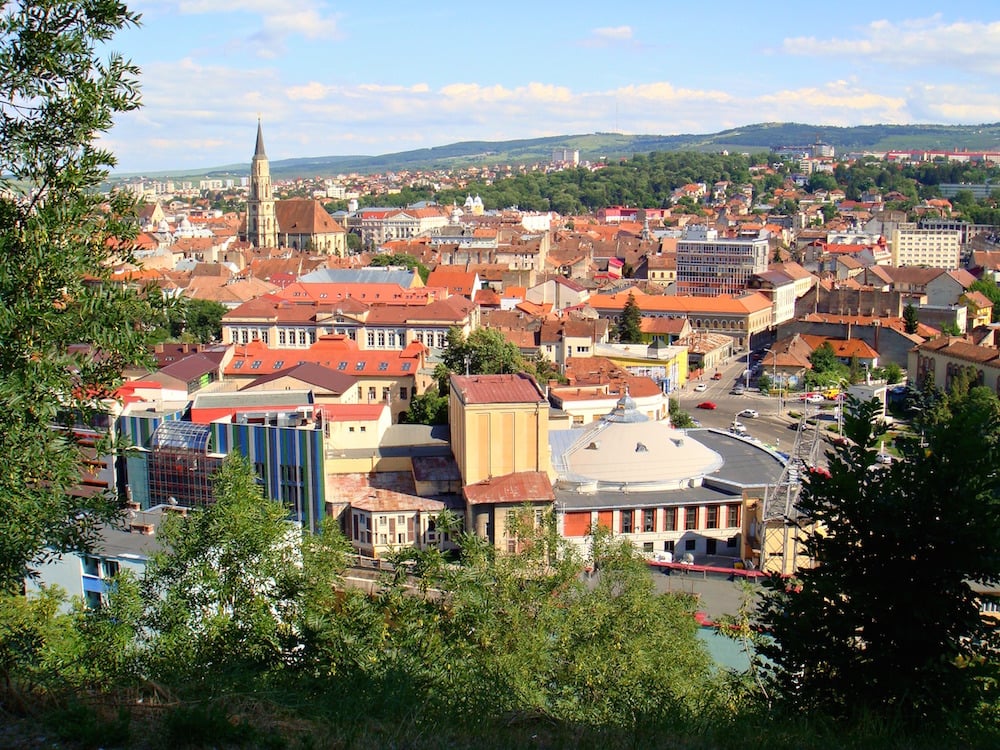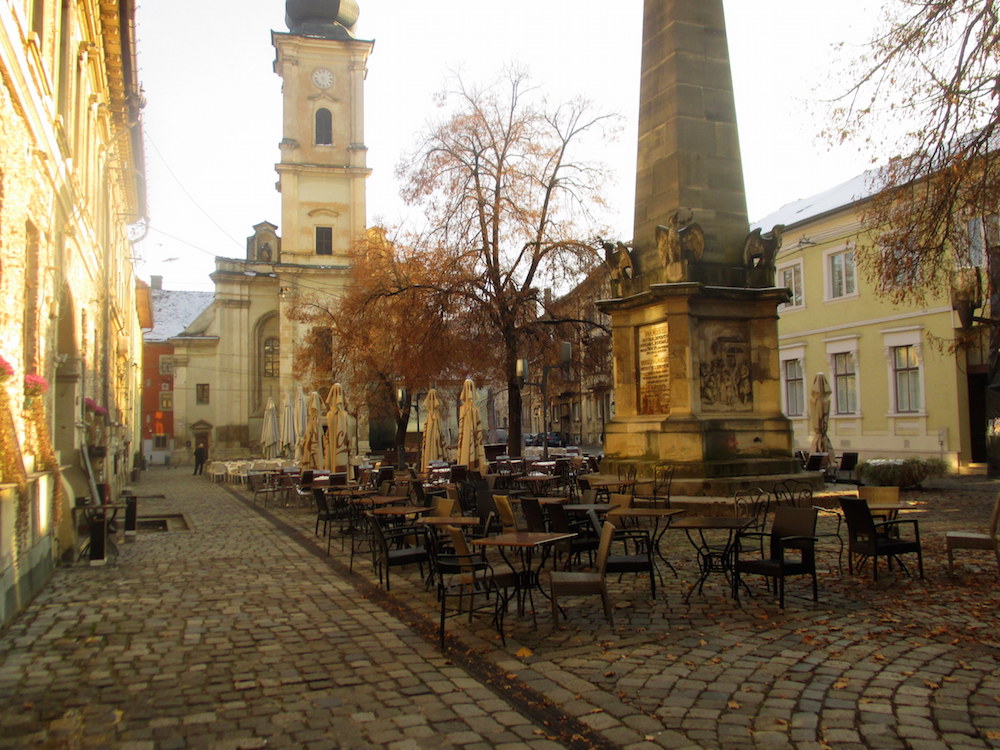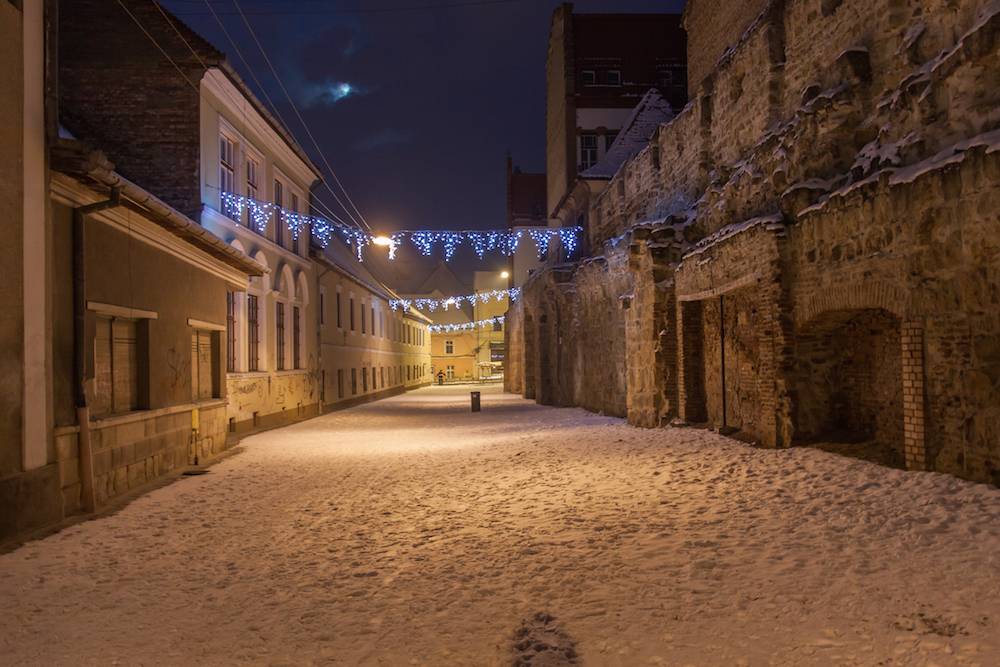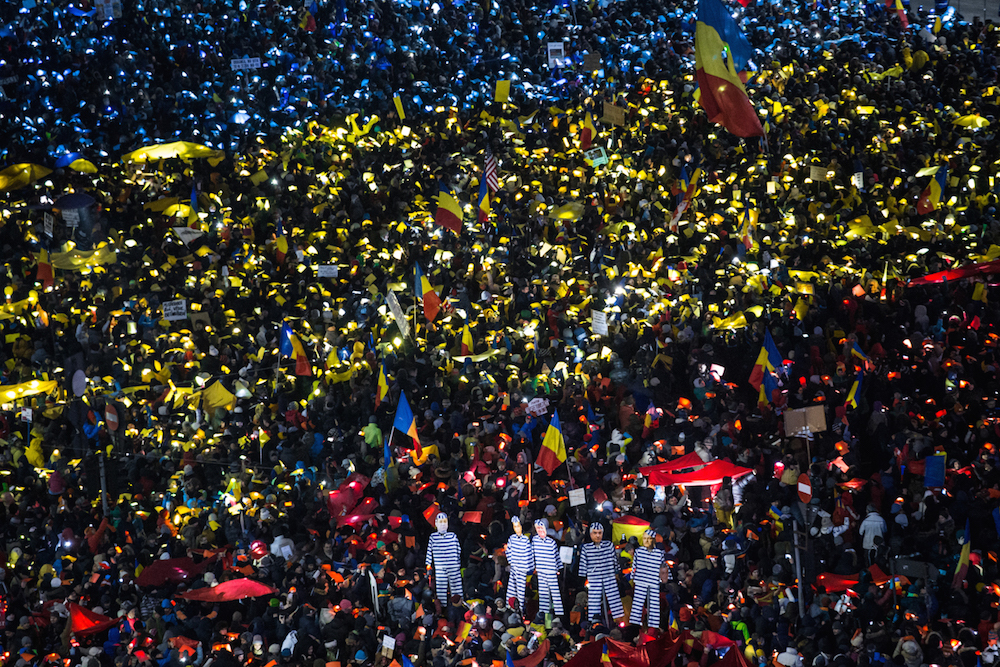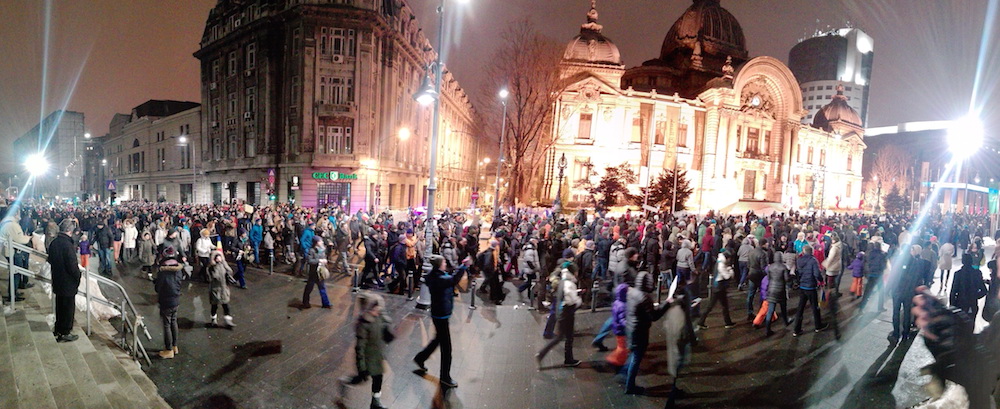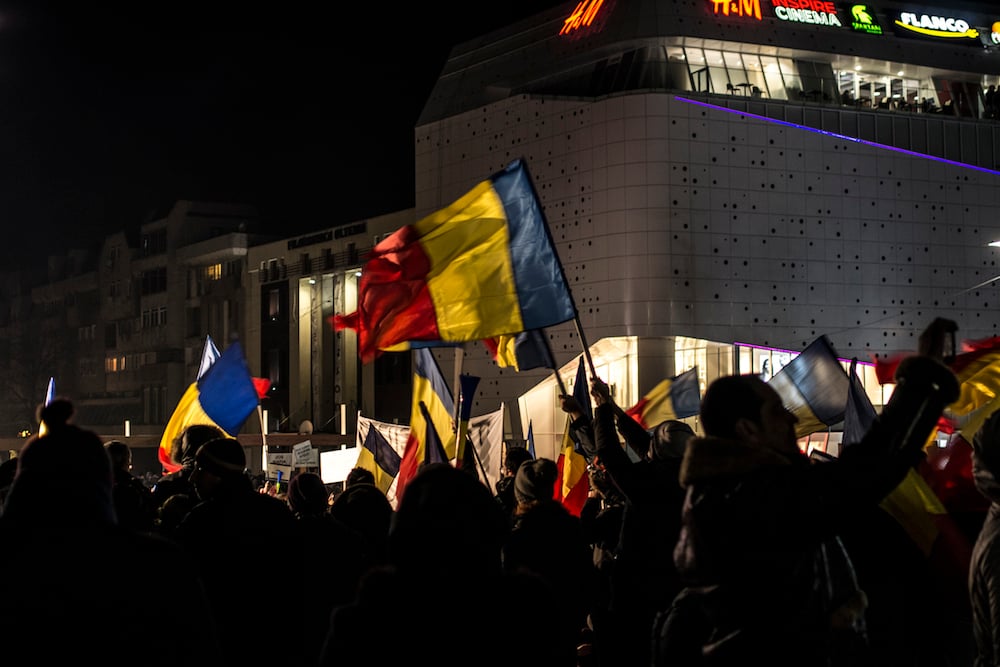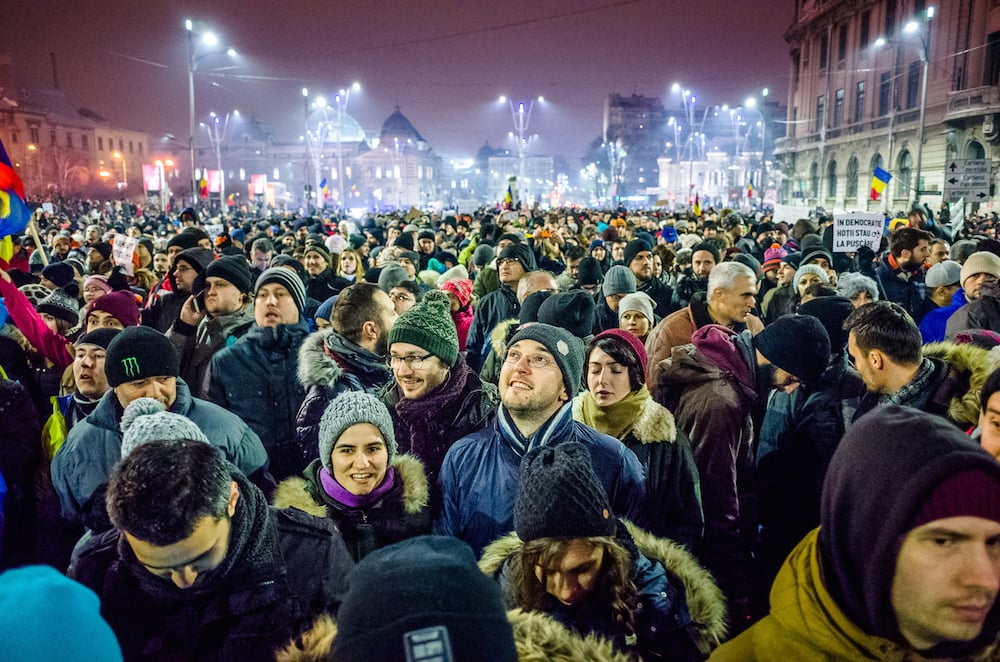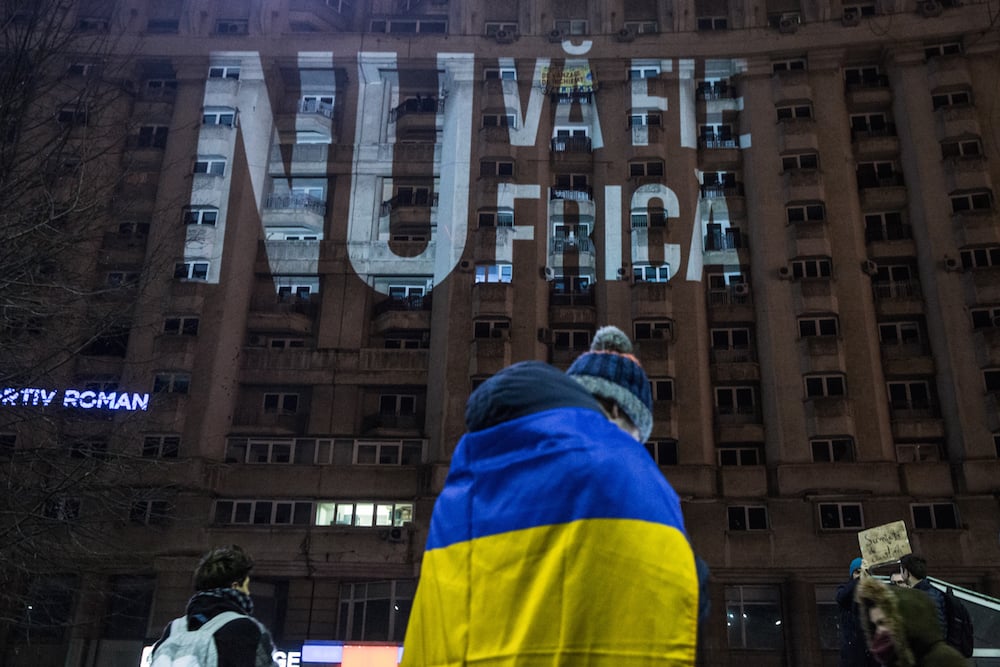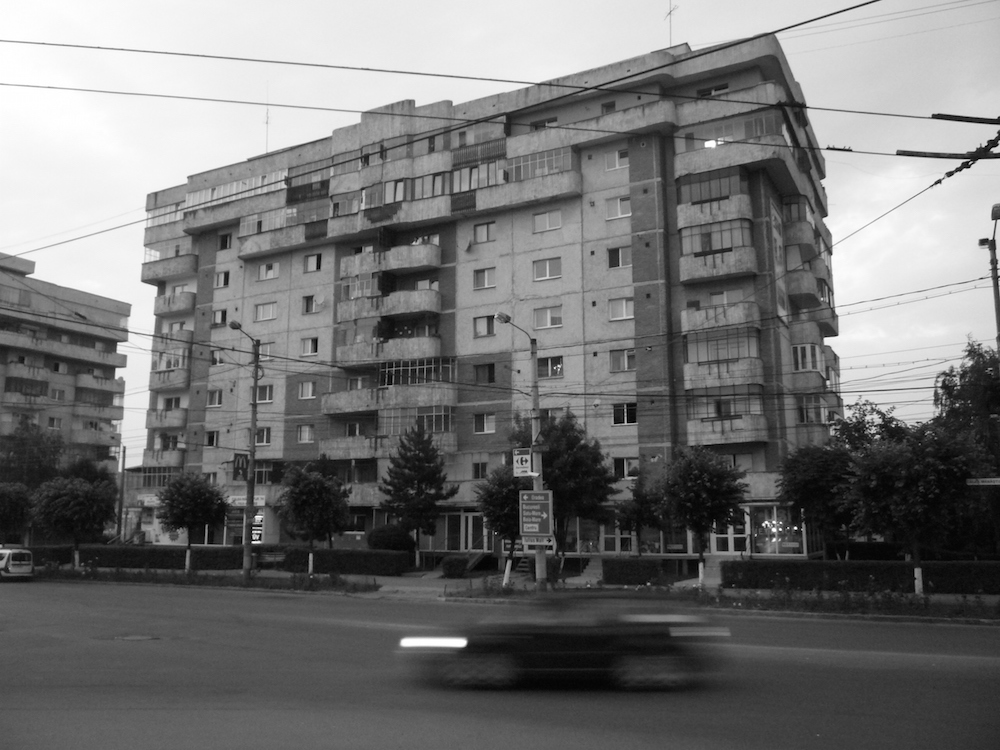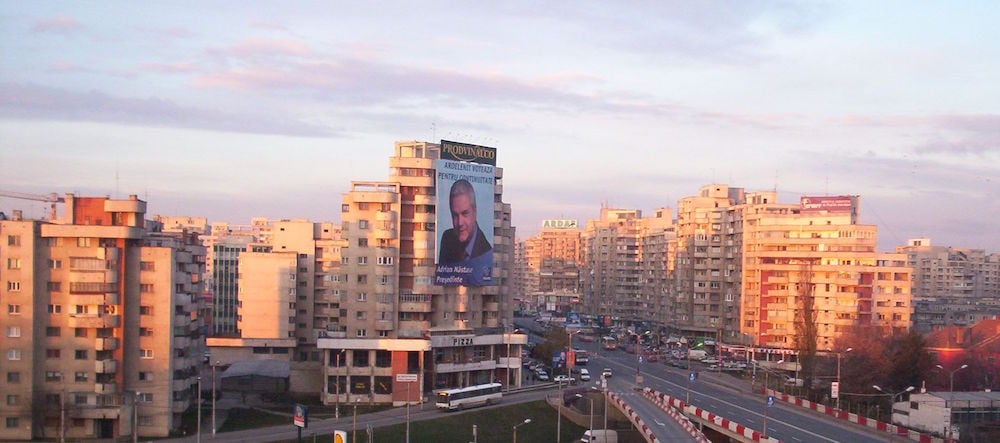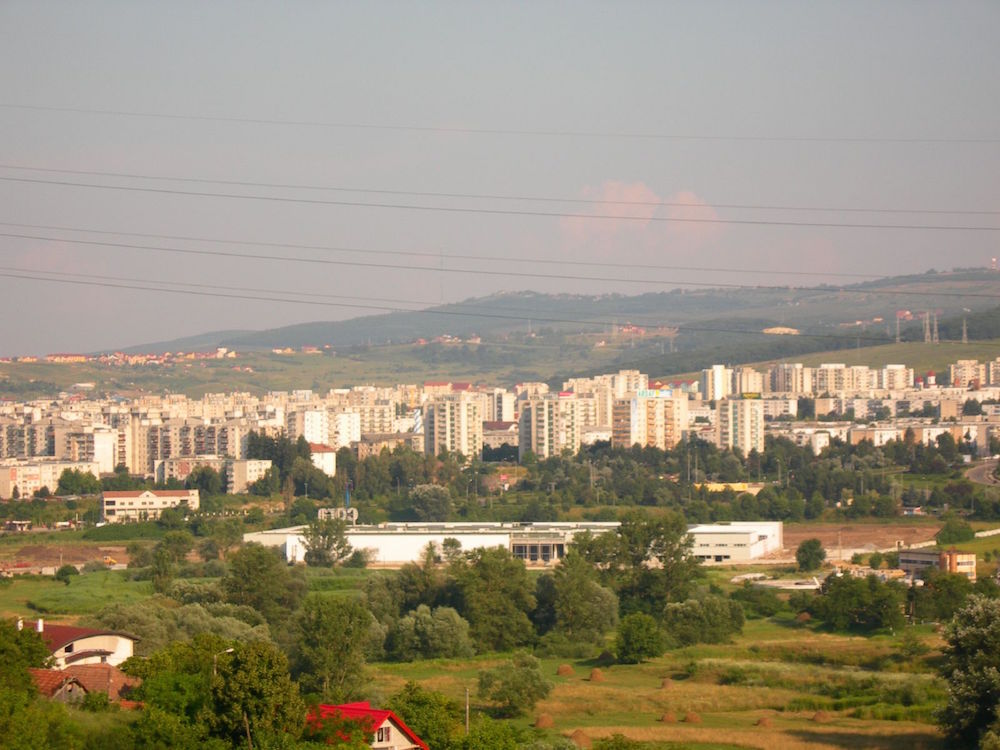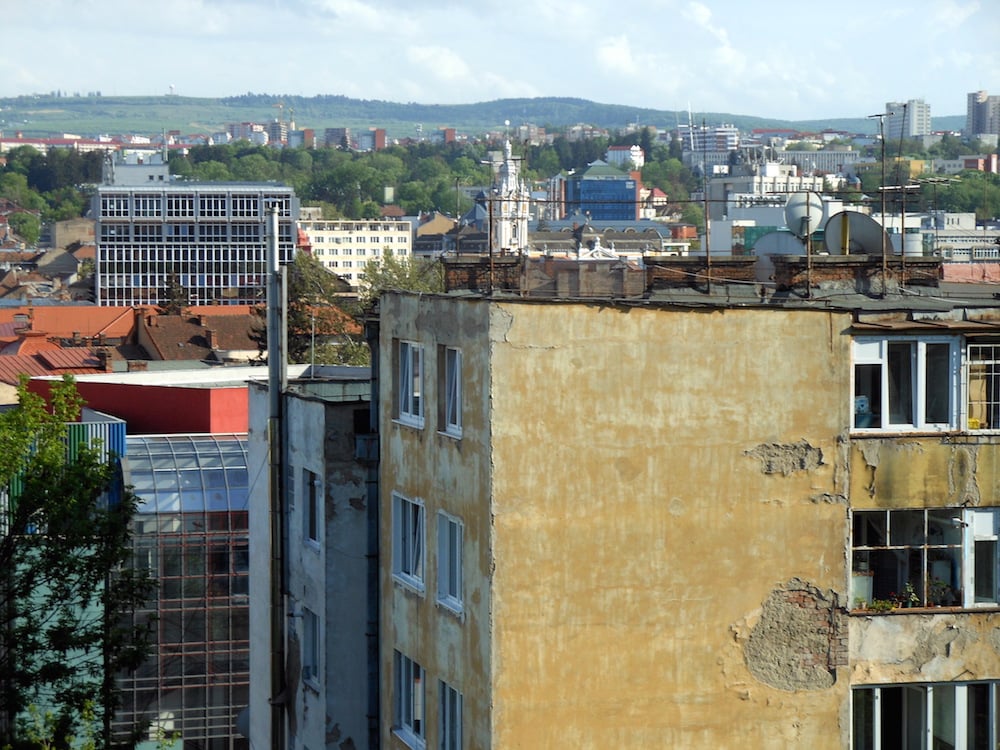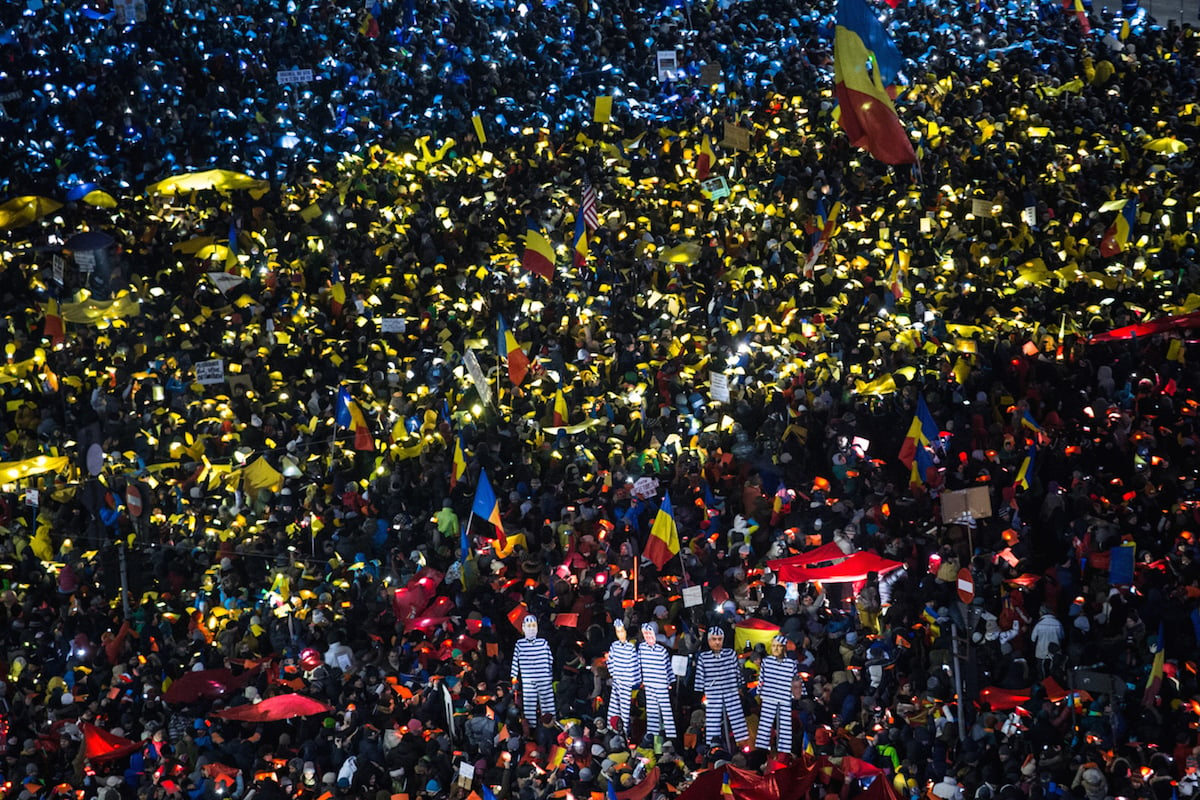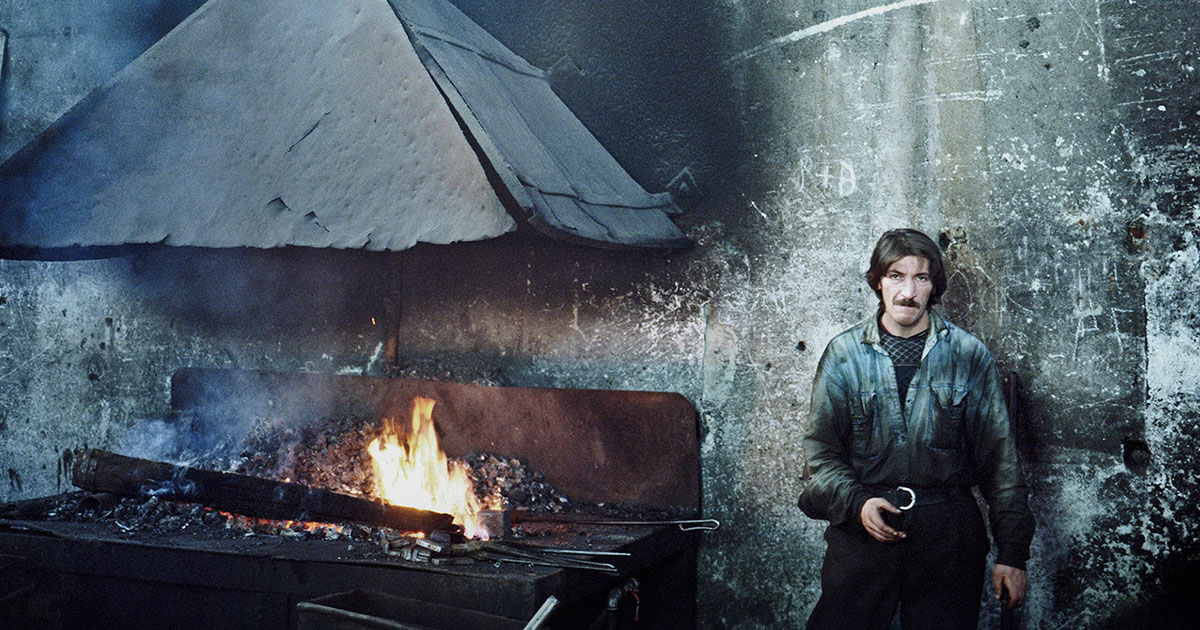Letter from Cluj-Napoca: the Transylvanian town fighting for Romania’s future
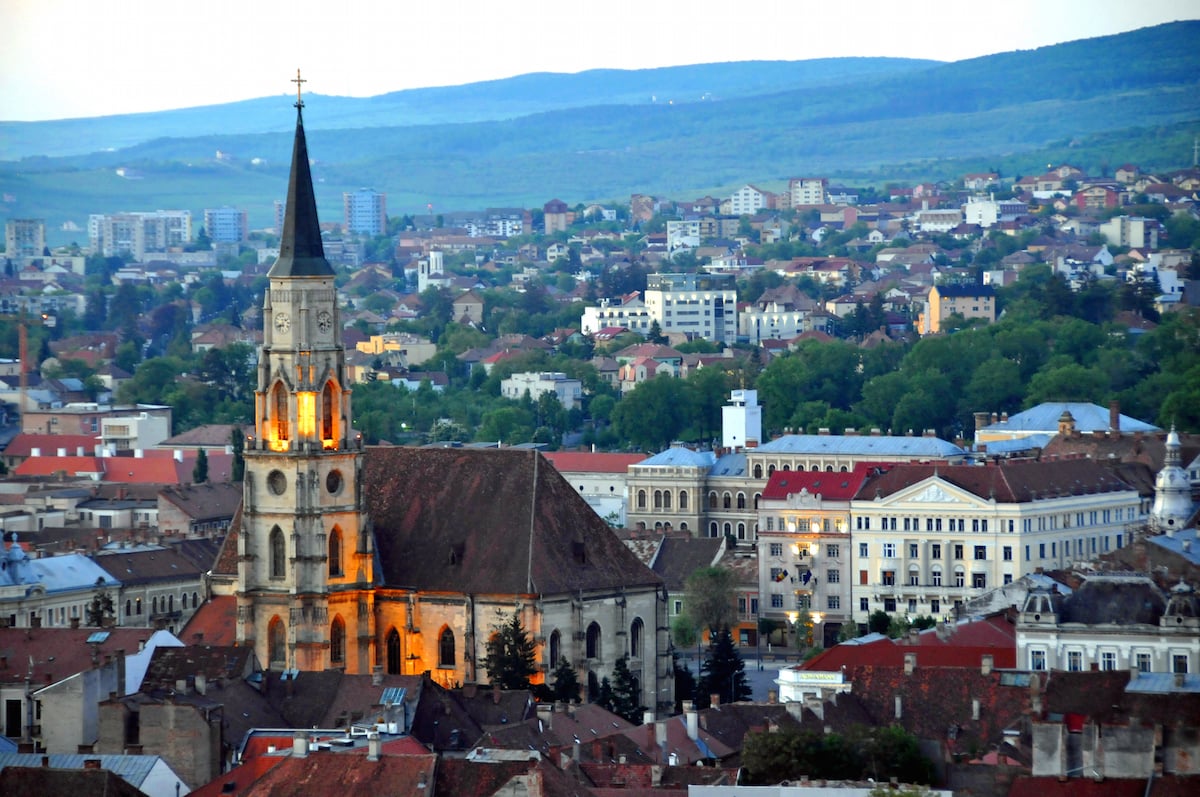
Cluj-Napoca might feel closer to central Europe than Bucharest, but the city threw itself into the recent protest movement calling for a reformed Romania. Will Mawhood reports from a politically vibrant and culturally hybrid city
Cluj-Napoca is the second-largest city in Romania, slightly ahead of Timișoara to the west, Iași to the east and Constanța to the south. And yet drop this in conversation with a local, and more often than not, they will look at you with mild suspicion and tell you that you’re mistaken. But Wikipedia will back you up: Cluj-Napoca, unlike all of those other cities, and unlike Romania’s sprawling capital, Bucharest, is growing bullishly.
Once you’re in the picturesque centre of Cluj (as the city is most commonly known), it’s not too hard to understand why people here find this fact hard to believe. The city may be the historic capital of Transylvania, the region beyond the Carpathians that makes up almost half of Romania, but it doesn’t feel like a metropolis. It rarely seems unmanageable in a great hurry, or even too much to take in at one glance.
It’s a long, constrained city that stretches on for at least 15 miles end to end, held between gentle hills as though cupped in the palm of a hand. Their rough, moor-like slopes, dotted with farmhouses and far-flung villas fill in the end of streets even in the heart of the city. One spur juts almost into the Old Town, and is topped by a huge, communist-era hotel, made up of white, layered slats and looking like a misdirected cruise liner run aground. These streets and many others are lined by frilly Habsburg buildings the colours of ice cream, testifying to centuries of rule from Vienna and Budapest, rather than Bucharest; some are scrubbed to an improbable sheen, others spread over with spiderweb cracks.
The largely medieval Old Town still remains in patches between these streets. Here, some of the alleys and narrow streets have such a hushed and forgotten air that it’s hard to believe you’re in the heart of a major city – in corners you may accidentally come across lost bits of the city wall or a miniature, centuries-old Orthodox church. By contrast, around Museum Square, every available cellar and balcony seems claimed by a cafe or bar. Cluj is a city of students – they make up as much as a quarter of the population – and students set the tone for what goes on here.
Some of the alleys and narrow streets have such a hushed and forgotten air that it’s hard to believe you’re in the heart of a major city
My host, Claudia, is a local, but spent three years studying in Bucharest – a time which she periodically refers to, in somewhat dark tones. It’s rare to find a Cluj resident, or a Transylvanian in general, who is fond of the capital, with its geometry-confounding traffic system and roving packs of stray dogs. As someone puts it to me during my stay, “people in Bucharest hate everyone, including themselves.” Cluj, with its high concentration of tech companies and students, pride itself on being more developed and forward-thinking than other Romanian cities, especially those across the mountains in Wallachia and Moldavia.
A day or two later, I’m standing in Piața Unirii, waiting for a protest. Romania has got very used to protesting recently. Just a few weeks before my visit, people took to the streets in cities across the country, after a controversial emergency decree was passed by the newly elected government – a coalition dominated by the Social Democratic Party (PSD), a notionally left-wing party who have been in power for much of the last 25 years, and are seen by their opponents as exemplifying many of Romania’s ills. The decree was controversial because it would, in effect, have decriminalised corruption; an (extremely high) cash ceiling was set below which prosecution would not be automatic.
A very significant and loud part of Romania did not accept this. Hundreds of thousands took to the streets for protests, the largest since ’89. They were particularly intense on this side of the Carpathians, where the PSD has much less support. In 2014, the presidential candidate running against the PSD was even accused of wanting to separate Transylvania from the rest of Romania, such was his dominance in the region. After a week of demonstrations, Prime Minister Sorin Grindeanu repealed the decree.
When I’m there, near the start of March, the battle has technically been won, but the mood in Cluj remains watchful, suspicious. Protests take place each Sunday, as a reminder to the government, but it’s not entirely clear what the objectives of the participants are at this point. That Sunday, at the time specified online, the square is mostly dominated by an array of stalls selling food and drink from the Székely Land, the three, overwhelmingly Hungarian-speaking counties that form an enclave in the mountainous centre of Romania.
The battle has technically been won, but the mood in Cluj remains watchful, suspicious
We buy some mulled wine from a stall and wait below the imposing statue of Matthias Corvinus, a Cluj-born medieval king of Hungary. Looming over us, and the whole square, is a towering, grimy stab of Gothic, the medieval Catholic cathedral, where services are mostly conducted in Hungarian; it eyeballs the very different Romanian Orthodox cathedral down the narrow, ornate Strada Iuliu Maniu. Bone-white, domed and hollow, it seems as poised and fragile as a shell retrieved from the sea.
After maybe 45 more minutes, the outline of a crowd starts to form. Most bring placards, bearing a variety of instructions and demands, and some carry flags of various sizes – no Romanian protest, regardless of its political inclination, is complete without flurries of blue-red-yellow tricolours. Many simply demand “resign”. One slightly alarming, hand-sketched one shows a scrawled outline of a plane on the brink of colliding with another larger aircraft, identified as the government. I don’t find this the most hopeful of metaphors.
Everyone I meet later that evening – people I knew, and people I didn’t, people from Transylvania, and from elsewhere – found the PSD ludicrous. And everyone sought to explain their appeal by stressing how religious much of the country is, as well as how close-knit and poorly educated many smaller communities are: “the priests tell them to vote for the PSD, and they do”.
I remember thinking of my bus ride that morning – the driver had been listening to a sermon. On our way, on the cusp of the centre, we pass a huge new church under construction. I remember it from three years before as simply a vast set of foundations in ugly stark red and grey brick, only the clearly tapering quality giving away that it is not just another set of office blocks. Now it has grown rungs like a birdcage, which are slowly being filled in, and a metal cupola has been affixed to the top. According to one measure, Romania is the most religious country in the EU – and the Romanian Orthodox Church has political influence and a financial punch to match, even in Cluj.
While I’m in Cluj, I come across an article written by Dennis Deletant, the pre-eminent historian of Romania in the English-speaking world, about his experience of being in Bucharest in December 1989, during the revolution that overthrew Nicolae Ceaușescu. He remembers an armband-wearing young revolutionary guarding a metro stop telling him: “we want real democracy, not Romanian democracy”.
“We want real democracy, not Romanian democracy”
Few would argue that Romanian democracy is what they got. And links between that uprising, to remove Europe’s last Stalinist regime, and the recent unrest have often been made explicit by protesters. One image I’ve seen shared repeatedly on social media pairs a tousled, underfed looking man from 1989, holding up a placard that reads “copiii nostri vor fi liberi” (“our children will be free”), with a recent image of a child with a sign reading “rezist”, the hashtag of the anti-corruption protests. They have drawn a disproportionately young crowd, often not united by political leanings or any inclination towards politics at all, in a not dissimilar way to Ukraine’s Maidan. In Cluj, protesters range from supporters of the neoliberal opposition to leftists to anti-Hungarian nationalists, all dissatisfied for their own reasons with the thuggish client state that currently exists. I’m surprised when I find that one friend, who I’ve never known to be interested in politics and admits she didn’t vote in the election, went to many of the protests; when I ask her why, she replies: “because they are bitches who think they can do what they want”.
What’s striking is just how little the Communist regime marked Cluj – at least the parts outsiders actually go to. This is especially the case compared to some other cities in Transylvania, places like Miercurea Ciuc and Alba Iulia, which in place of centres have sculpted lines of high-rises. There are exceptions – most obviously Piața Mărăști, a glorified roundabout just outside the city centre which brings to mind some of Bucharest’s megalomaniacal architecture; there are also the peripheral sleeping districts like Gheorgheni and Mănăștur, tacked on to Cluj under Ceaușescu.
What’s striking is just how little the Communist regime marked Cluj – at least the parts outsiders actually go to
The best place to appreciate this, of course, is from the Citadel, the sudden hill overlooking the town, just beneath the huge absurd hotel and an enormous metal cross, commemorating victims of communism. From there, you can see how the blocks of flats mass at the ends of the city, like a waiting audience. Beyond them, the hills start to rise gradually into imperceptibility, the first faint rumours of the Apuseni Mountains. Down below, its variegated church spires poke up from the ruckus of low-rise roofs like periscopes. Cluj looks perfectly Central European, pretty, self-contained, slightly chaotic – it could be a couple of hundred miles north.
But this is a time when, after Orbán and Kaczynski, the concept of Central Europe seems tarnished as never since the Cold War, tied to authoritarianism and xenophobia. Looking down on the city, I start to wonder: can Cluj and Romania really buck the tide this time, or will they simply end up with Romanian democracy again?
